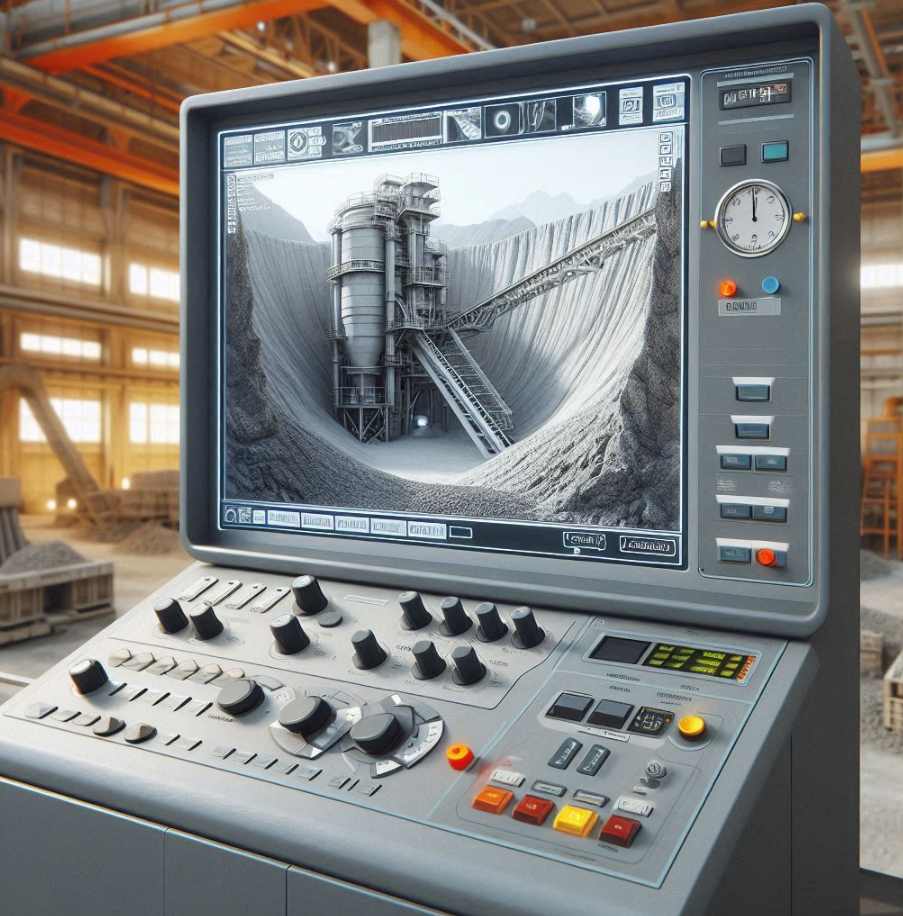Contents
Comprehensive Report on X-Ray Devices Used in Cement Plants for Quality Control

TO Download this post and all the books and excel sheets and my personal notes and presentations I collected about cement industry in the last 30 years click the below paypal link
Introduction
In cement plants, quality control is crucial to ensure the consistent production of high-quality cement. X-ray devices play a vital role in this process by providing accurate and real-time analysis of the composition of raw materials and clinker. This report explores the use of X-ray devices in cement plants, popular manufacturers and models, automatic quality control, controlling kiln feed and raw mill feed, integration with Schenck feeders, popular Schenck weight feeders, and the latest AI trends in automating the process.
X-Ray Devices in Cement Plants
X-ray fluorescence (XRF) and X-ray diffraction (XRD) are the primary techniques used in cement plants for quality control. These devices help in analyzing the elemental composition and mineral phases of raw materials, intermediates, and final products.
Popular Manufacturers and Models
- Thermo Fisher Scientific
- Model: ARL 9900 Series
- Features: Combines XRF and XRD for comprehensive analysis.
- Application: Used for the analysis of raw mix, clinker, and cement.
- Model: ARL 9900 Series
- PANalytical (Malvern Panalytical)
- Model: Axios FAST
- Features: High-speed XRF spectrometer.
- Application: Suitable for high-throughput quality control in cement production.
- Model: Axios FAST
- Bruker
- Model: S8 TIGER Series 2
- Features: High-performance XRF spectrometer with advanced detection capabilities.
- Application: Used for raw material analysis and quality control in the cement industry.
- Model: S8 TIGER Series 2
- SPECTRO Analytical Instruments
- Model: SPECTRO XEPOS
- Features: Advanced XRF system with high sensitivity.
- Application: Ideal for multi-element analysis in cement plants.
- Model: SPECTRO XEPOS
Automatic Quality Control
Implementing Automatic Quality Control
Automatic quality control in cement plants involves integrating X-ray devices with automated sampling and analysis systems to provide real-time data for process adjustments. This reduces human error, enhances precision, and ensures consistent quality.
- Automated Sampling Systems:
- Function: Collects samples from various stages of the production process.
- Integration: Connected to X-ray devices for continuous analysis.
- Real-Time Data Analysis:
- XRF/XRD Integration: Provides immediate feedback on the composition of raw materials and clinker.
- Software Integration: Uses advanced software to analyze data and make process adjustments automatically.
- Control Systems:
- Function: Adjusts the feed rates and raw material mix based on analysis.
- Integration: Connected to kiln feed and raw mill feed systems.
Controlling Kiln Feed and Raw Mill Feed
X-Ray Integration for Feed Control
- Kiln Feed Control:
- XRF Analysis: Continuously monitors the chemical composition of the kiln feed.
- Automatic Adjustments: Feeds data to the control system to adjust the proportion of raw materials, ensuring the optimal composition of the feed.
- Raw Mill Feed Control:
- XRF/XRD Analysis: Analyzes the raw mill feed to ensure the correct composition of limestone, clay, and other additives.
- Automated Feeders: Adjusts the feed rates of different materials based on real-time analysis data.
Integration with Schenck Feeders
Schenck Process Integration
Schenck Process provides a range of high-precision feeders that can be integrated with X-ray devices for automated feed control.
- Schenck Weighfeeders:
- MULTIDOS® H: High-accuracy feeder for raw material dosing.
- MULTIDOS® DMO: Specifically designed for difficult materials with variable flow properties.
- Integration Process:
- Data Communication: X-ray devices provide real-time composition data to the Schenck feeder control system.
- Automated Adjustments: Schenck feeders adjust the feed rates based on the data, ensuring the optimal mix of raw materials.
Popular Schenck Weight Feeders
- MULTIDOS® H
- Application: Used for continuous gravimetric feeding of bulk materials.
- Features: High accuracy, robust design, and easy integration with control systems.
- MULTIDOS® VDP-C
- Application: Ideal for precise feeding of powdered materials.
- Features: Versatile, high-precision feeding, suitable for a wide range of materials.
- MULTIDOS® DMO
- Application: Designed for feeding materials with variable flow properties.
- Features: Adaptable, reliable, and ensures consistent feed rates.
AI Trends in Automating the Process
Advanced AI Integration
- Predictive Maintenance:
- AI Algorithms: Analyze data from X-ray devices and feeders to predict equipment failures before they occur.
- Benefits: Reduces downtime, extends equipment life, and lowers maintenance costs.
- Process Optimization:
- Machine Learning: AI systems learn from historical data to optimize the production process continuously.
- Benefits: Enhances efficiency, reduces waste, and ensures consistent product quality.
- Real-Time Monitoring and Control:
- AI-Driven Analytics: Provides real-time insights and automatic adjustments to the production process.
- Benefits: Improves reaction times, reduces human error, and ensures optimal process parameters.
Conclusion
X-ray devices are indispensable in cement plants for ensuring the quality and consistency of raw materials and final products. Popular manufacturers like Thermo Fisher Scientific, PANalytical, Bruker, and SPECTRO offer advanced models that provide accurate and real-time analysis. Integrating these devices with automated systems and Schenck feeders enables efficient control of kiln and raw mill feeds. The incorporation of AI technologies further enhances the automation process, leading to improved efficiency, reduced downtime, and consistent product quality.
References and Sources
- Thermo Fisher Scientific – Thermo Fisher Scientific Official Site
- PANalytical (Malvern Panalytical) – Malvern Panalytical Official Site
- Bruker – Bruker Official Site
- SPECTRO Analytical Instruments – SPECTRO Official Site
- Schenck Process – Schenck Process Official Site
- AI in Industry – AI Trends
This comprehensive report serves as a valuable reference for procurement managers and quality control teams in cement plants, highlighting the critical role of X-ray devices, integration with Schenck feeders, and the impact of AI on automating the quality control process.
